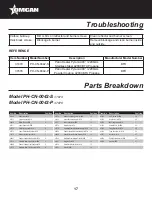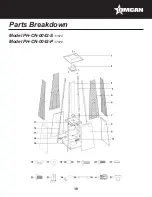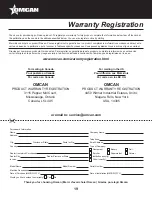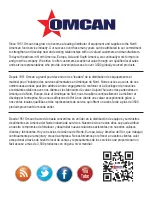
11
Installation
Operation
A dented, rusted or damaged propane cylinder may be hazardous and should be checked by your cylinder
supplier. Never use a propane cylinder with a damaged valve connection.
The propane cylinder must be constructed and marked in accordance with the specifications for LP gas
cylinders of the U.S. Department of Transportation (DOT) or the standard for cylinders, spheres and tubes for
transportation of dangerous goods and commission, CAN/CSA-B339.
The cylinder must have a listed overfilling prevention device.
The cylinder must have a connection device compatible with the connection for the appliance.
The cylinder used must include a collar to protect the cylinder valve.
Never connect an unregulated propane cylinder to the heater.
Screw regulator onto gas hose. Do not cross-thread. Tighten securely. Attach regulator to cylinder. Complete
attachment.
Install cylinder, and secure with the propane tank strap tightly.
• Do not store a spare LP-gas cylinder under or near this appliance.
• Never fill the cylinder beyond 80 percent full.
• Place the dust cap on the cylinder valve outlet whenever the cylinder is not in use. Only install the type
of dust cap on the cylinder valve that is provided with the cylinder valve. Other type of caps or plugs may
result in leakage of propane.
LEAK CHECK
WARNING
• Perform all leak tests outdoors.
• Extinguish all open flames.
• NEVER leak test when smoking.
• Do not use the heater until all connections have been leak tested and do not leak.
1. Make 2-3 oz. of leak check solution (one part liquid dishwashing detergent and three parts water).
2. Apply several drops of solution where hose attaches to regulator.
3. Apply several drops of solution where regulator connects to cylinder.
4. Make sure all patio heater and light valves are OFF.
5. Turn cylinder valve ON.
If bubbles appear at any connection, there is a leak.






































